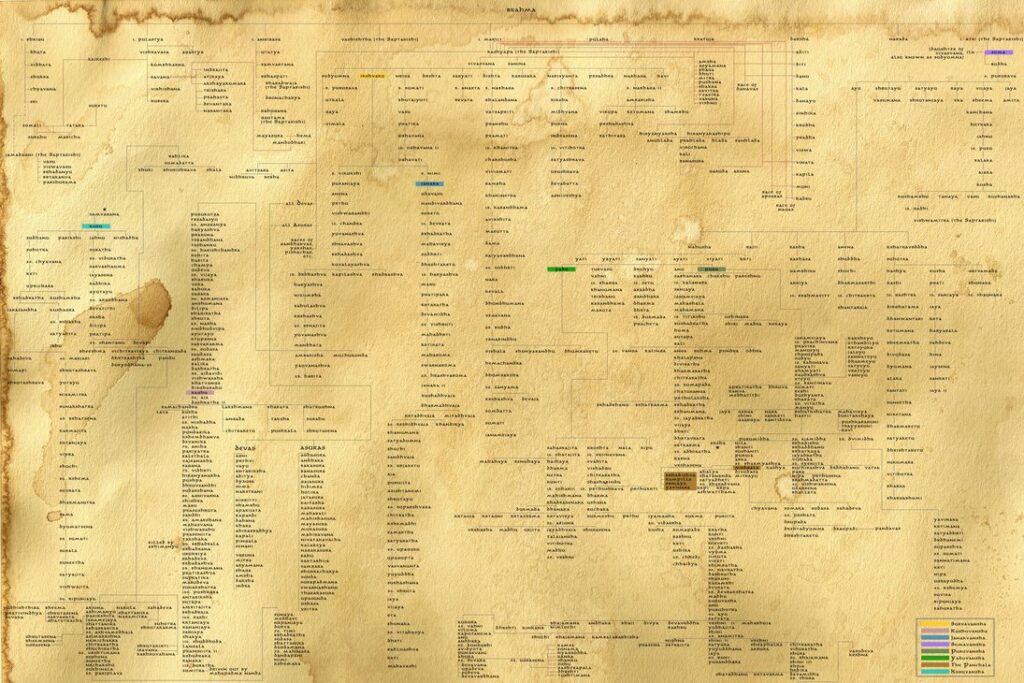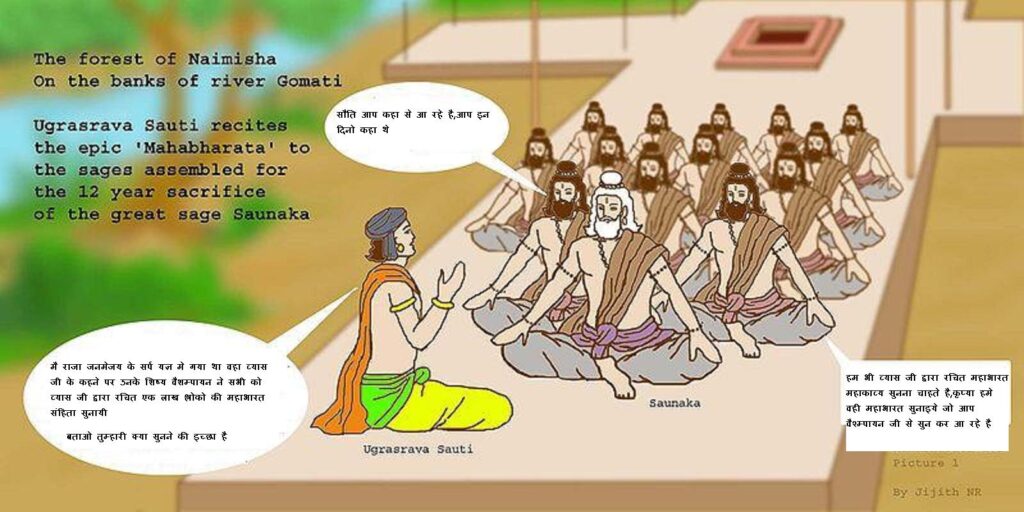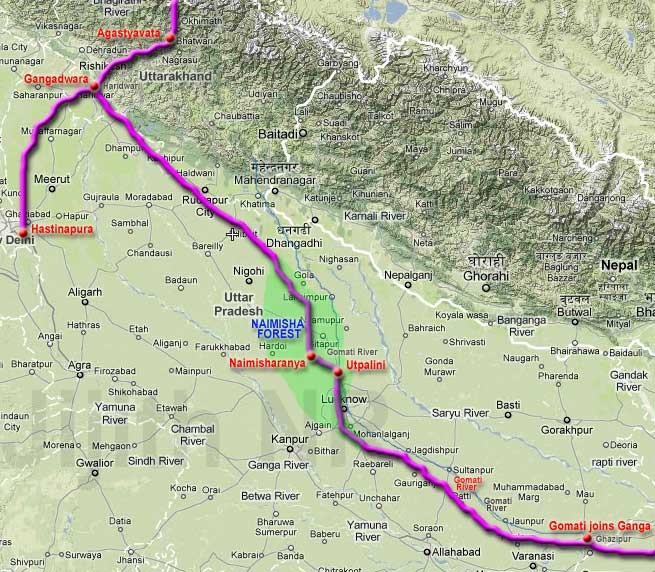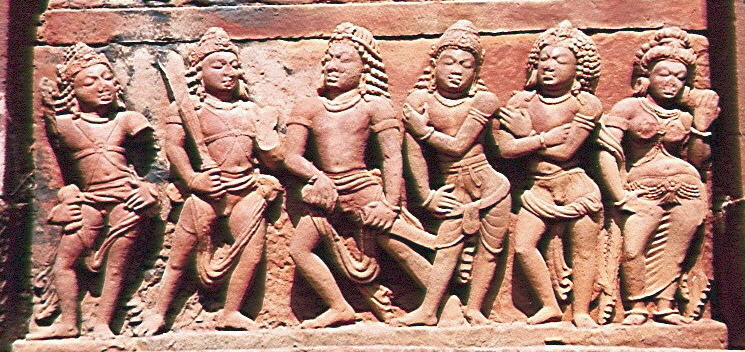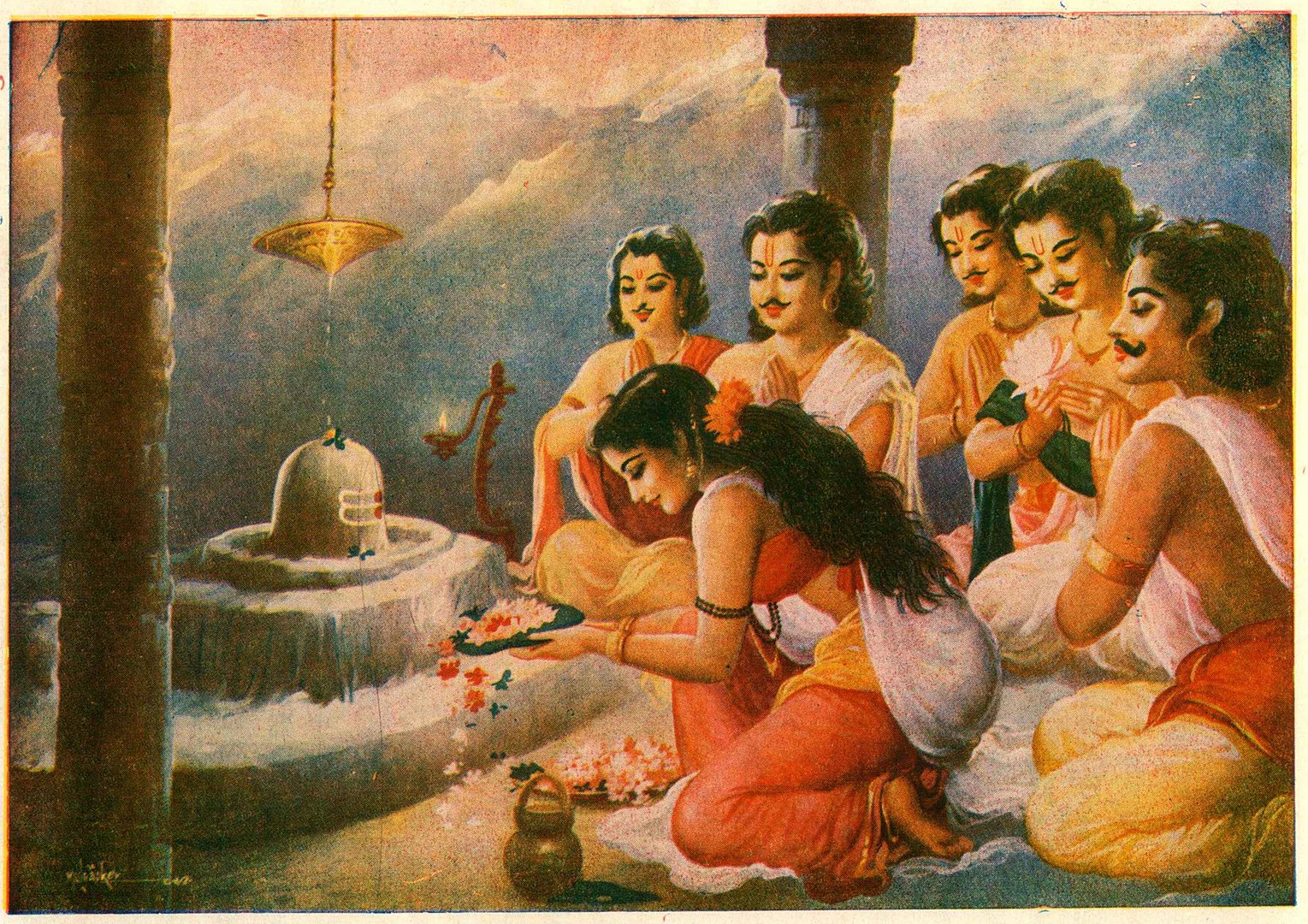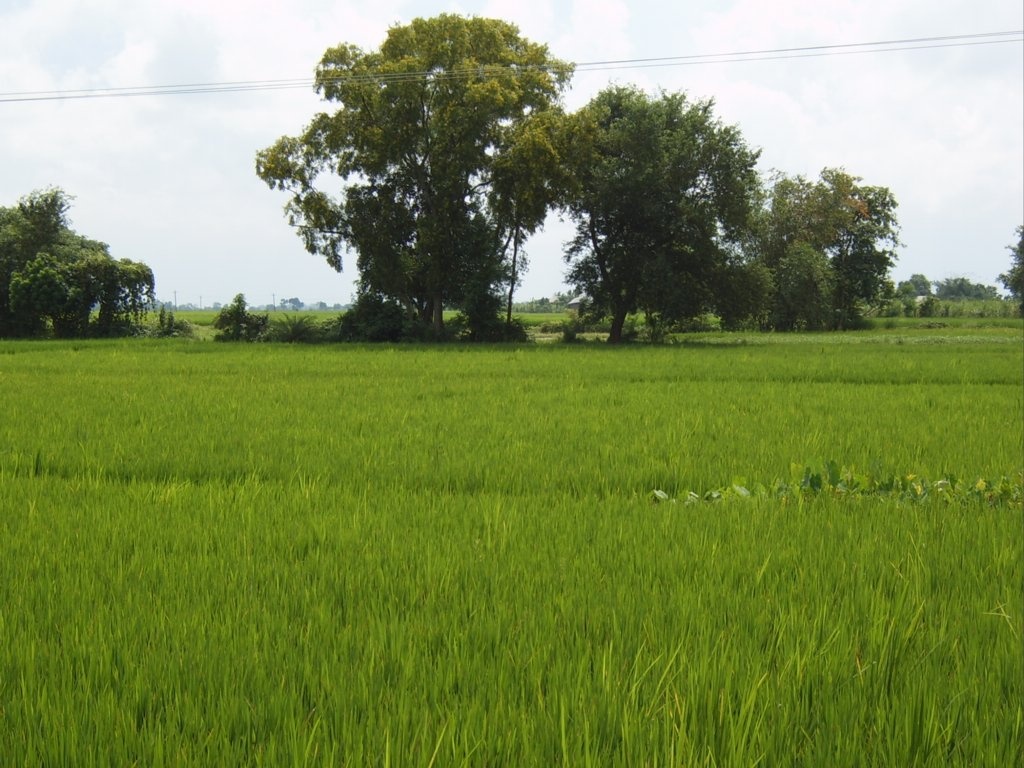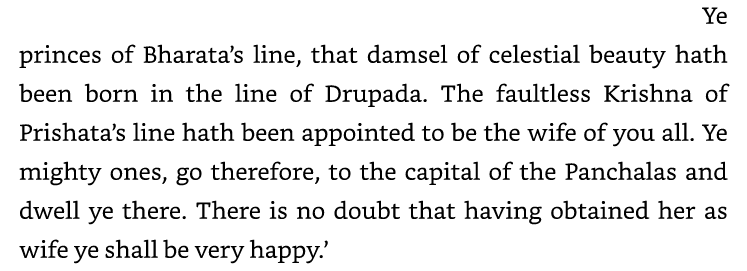
Note: In the previous post, we read about how Indra helped Uttanka reach his teacher’s house on time and gift the queen’s earrings to Veda’s wife. Pleased with Uttanka, his teacher, Veda, gave him permission to leave and lead his life independently.
In this post, we will read about Uttanka’s continued anger toward Takshaka which led him to go to Hastinapura to seek revenge.
Uttanka left his teacher’s house after obtaining his leave. Even though Uttanka was able to give the guru-dakshina on time, he was very angry with the serpent king, Takshaka. He wanted to take revenge on the serpent. With this in mind, he proceeded toward Hastinapura to meet king Janamejaya.
Note: You may remember from a previous post that Janamejaya and his brothers were cursed by the celestial she-dog, Sarama, for harassing her son. Disturbed by the curse, the king appointed an accomplished sage called Somasrava (who could neutralize the curse) as his purohit. Soon after appointing Somasrava, Janamaejaya marched towards Takshashila to bring that region under his control.
When Uttanka reached Hastinapur, Janamejaya had won the battle in Takshashila and was on his way back to Hastinapura.
After reaching Hastinapurs, Uttanka waited for Janamejaya to return from the battle. When he saw the victorious king enter Haspinapura, surrounded by ministers on all sides, he pronounced blessings on the king in a proper manner (as would befit an emperor). After that, at an opportune moment, Uttanka spoke to the king in a melodious way with the correct accent, saying, “O best of monarchs, how is it that you spend your time like a child when another matter urgently requires your attention?”
Janamejaya also greeted the excellent brahmin respectfully and replied, “In caring for my subjects, I perform the duties of my noble tribe. What is this matter that requires my urgent attention and has brought you here?”
When the excellent king, Janamejaya, of generous heart addressed the great brahmin known for his good deeds, he replied to the monarch, “O king, the matter that demands your attention is closely related to you. Therefore please do it. The serpent king, Takshaka, was responsible for your father’s death. He bit your father and reduced him to the five elements like a tree stricken by thunder. The wicked Takshaka committed this unnecessary act because he was intoxicated with power. Not only did he bite your father, but he also caused Kasyapa, the great physician, to run back when he was coming to Hastinapura to help your father recover from the deadly bite. The time, ordained by the fates, has come for you to avenge your father’s death at the hands of that vile serpent. It is therefore your duty to burn the wicked serpent in the blazing fire of a snake sacrifice. O king, give immediate orders for the sacrifice. That way, you will avenge the death of your father and you will also do me a great favor because that wicked serpent had once obstructed me when I was doing important work for my teacher.”
Janamejaya became sorrowful about his father’s death when he heard Uttanka’s words. Furious with Takshaka, Janamejaya asked his ministers to explain to him all the details of his father’s demise. The details, narrated by Uttanka himself, caused Janamejaya to become overcome with pain and sorrow.
Note: With this post, we end the Paushya (sub) Parva of the Adi Parva of the Mahabharata. The next post begins with the Pauloma (sub) Parva of the Adi Parva of the Mahabharata.
You might recall that all the stories we have read till now were narrated by Ugrasrava Sauti (a bard) to a group of ascetics in the Naimisha forest. These ascetics had gathered to attend Saunak Kulapati’s 12-year yagna. In the next post, Sauti again asks the ascetics which story they want to hear. We’ll find out if they want to hear about Janamejaya’s snake sacrifice immediately or later.
Previous: Uttanka Gifts the Earrings to his Teacher’s Wife in the Nick of Time
Next: Ugrasrava Sauti Asks the Ascetics of Naimisha Forest Which Story They Want to Hear Next


